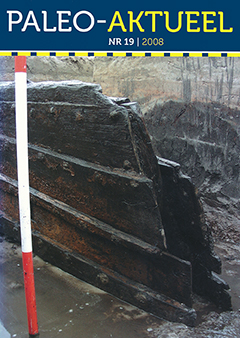Een studie naar de ontwikkeling van trapeziumvormige pijlbewapening tussen 8100 en 4100 BP
Samenvatting
Bull’s eye! The development of trapezes and transverse points between 8100 and 4100 BP. In the northern half of the Netherlands, the Late Mesolithic (c. 8100-6000 BP) is characterised by the occurrence of trapeze-shaped flint tips. Trapezes continued to be in use during the Swifterbant culture (c. 6000-4800/4700 BP), including the ceramic Mesolithic phase (c. 6000-5600 BP). During the TRB, transverse points predominated. In this article some of the basic premises of the typological development of trapezes (narrow to broad) and the chronological relevance of ‘types’ (symmetric, asymmetric, right-angled and rhombic) are discussed. One of the main conclusions of this paper is that it is possible, on the basis of analyses of metric and non-metric traits, to make a distinction between true ‘Mesolithic’ trapezes, and trapezes belonging to the (Neolithic) Swifterbant culture. The outcome of these analyses may be of help in obtaining a relative date for undated (surface) assemblages, and may furthermore lead to the positive identification of Swifterbant settlements in the Pleistocene interior, which are hitherto unknown. A preliminary analysis of TRB and SGC transverse points suggests that improved resolution may be achieved for the period after c. 4700 BP as well.

